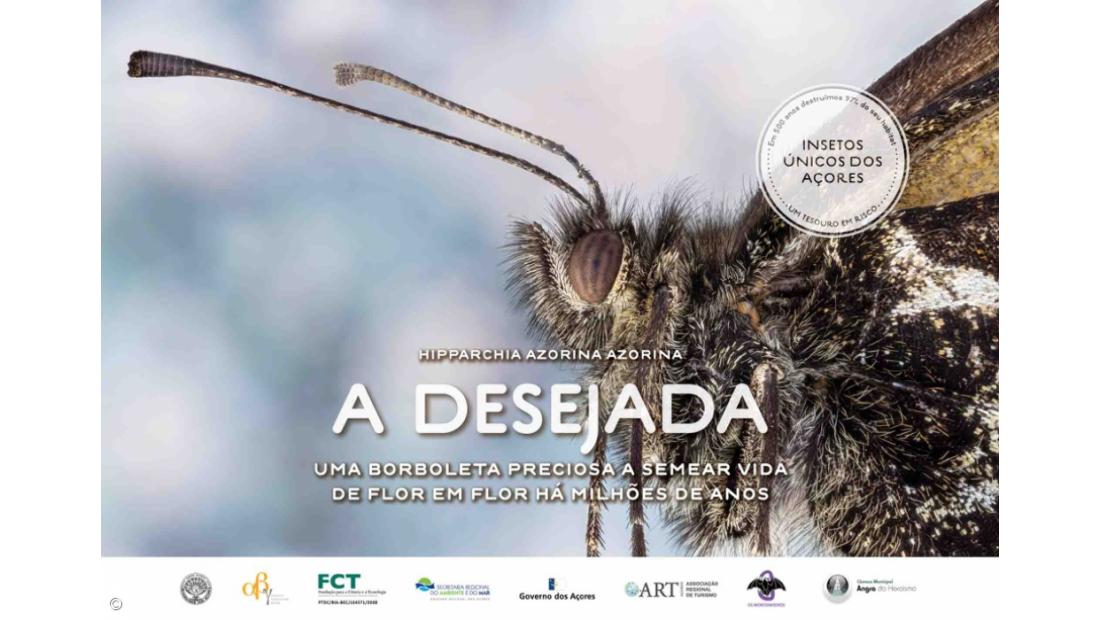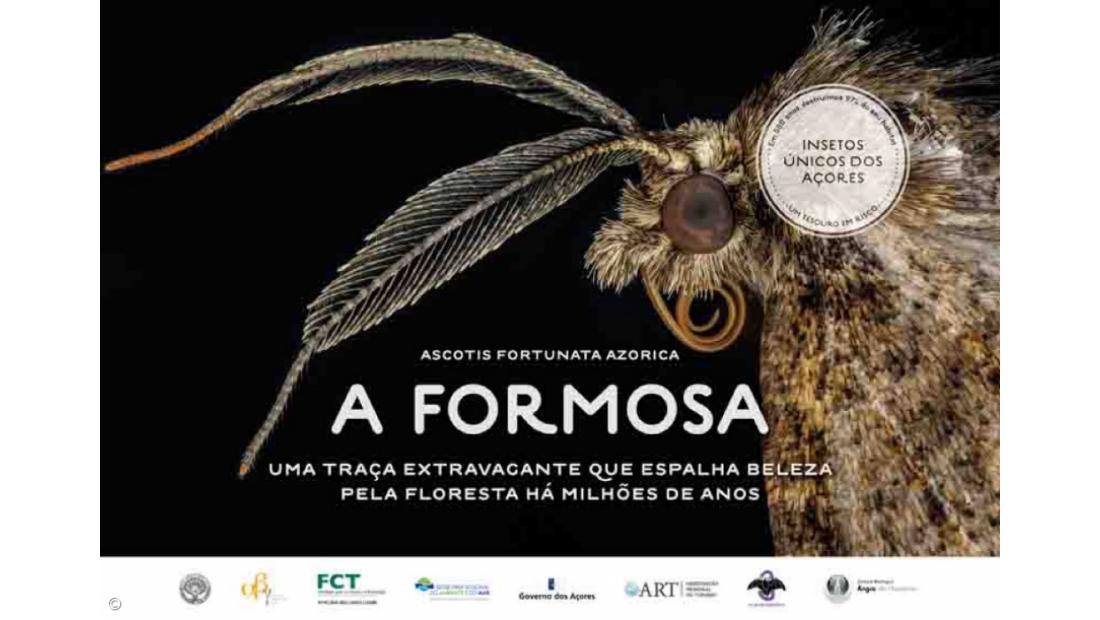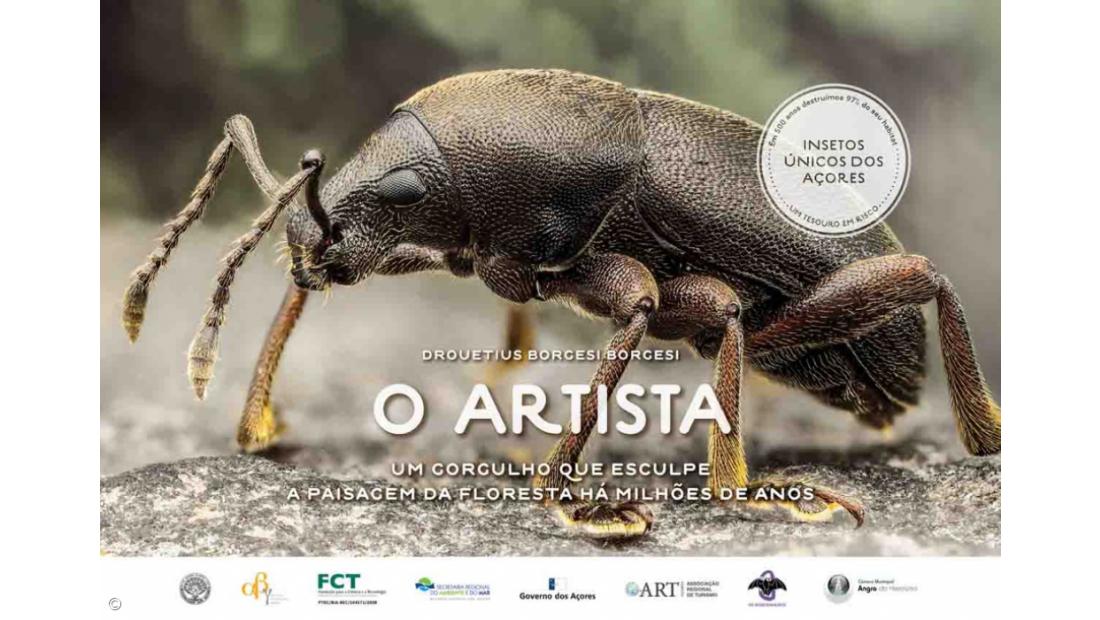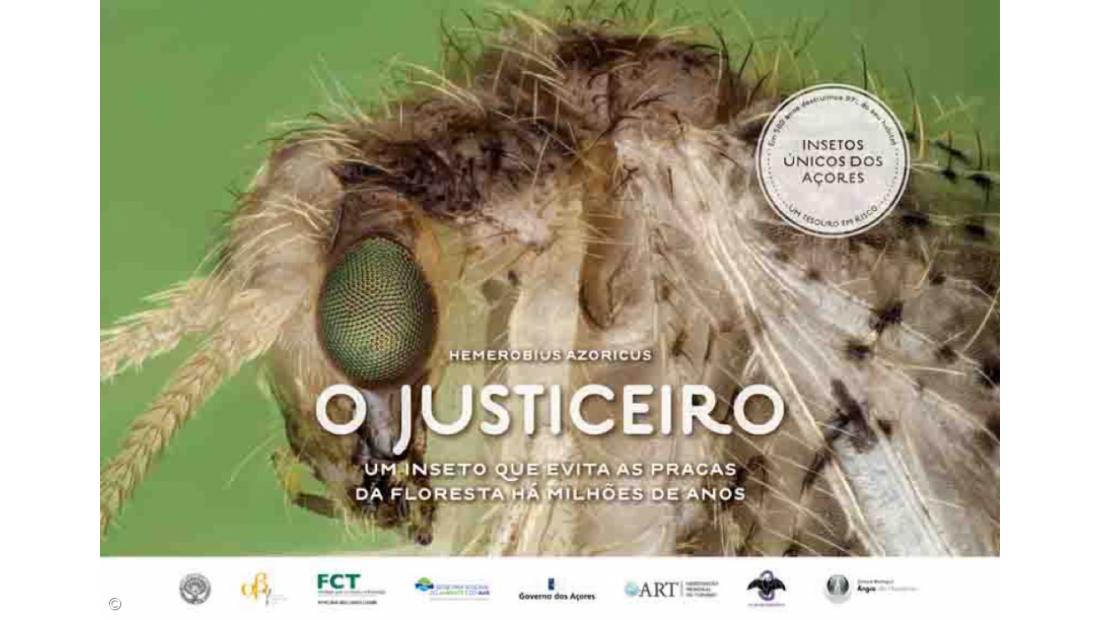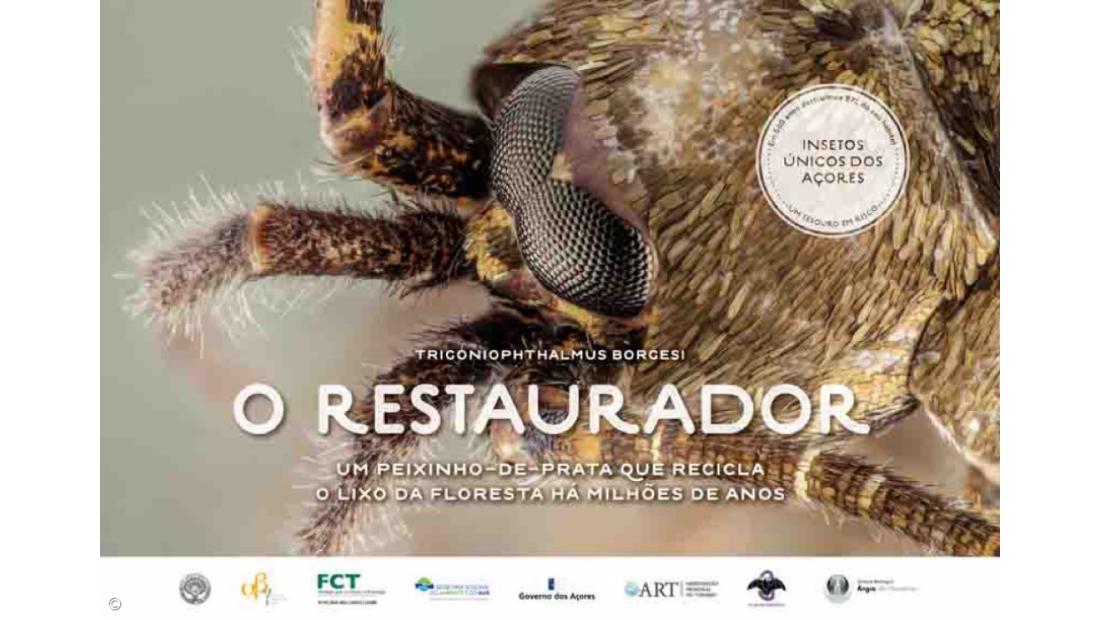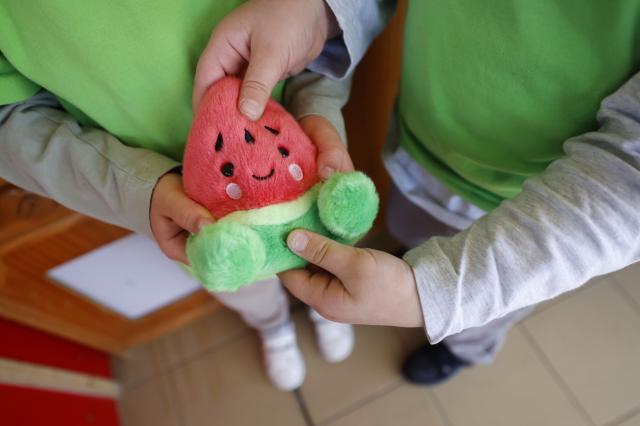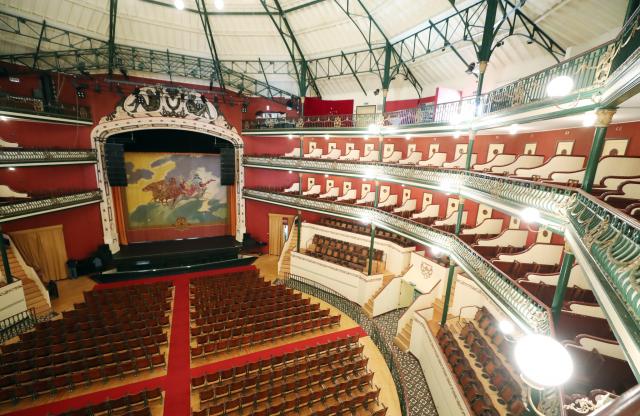These insects only exist in the Azores and have been here for millions of years, long before human beings. They play an important role in decomposition, pest control, pollination and the very architecture of the landscape. They may look like repellent animals, but in fact they are living beings that perform functions that would cost the economy millions of euros if they had to be made by humans.
Imagine what would be of agriculture and human eating habits if we had to pollinate, with our hands, all the plants from which we benefit?
The exhibition "Azoreans for millions of years" is composed of large screens displayed in strategic locations on the streets of the city of Lagoa. The screens draw attention due to the magnification and detailing of the insects' photographs, which convey a false sensation of monstrosity, as we are talking about small insects, only millimeters in length. The screens – whose photographs illustrate this news report – include short descriptions of the insects, as all of them have been given a cognomen based on the kings of Portugal.
The images also feature a seal warning for the risk of disappearance of these endemic species, which have been losing much of their natural habitat over the centuries as a result of human action. These endemic insects live in the native forest of the Azores, where only about 2.5% of the islands’ original habitat before settlement remains.
But what are then the native insects of the Azores, the “heroes” of this exhibition?
They are the Azorean grayling (Hipparchia azorina azorina); the beetle (Drouetius borgesi borgesi); the brown lacewings (Hemerobius azoricus); the moth (Ascotis fortunata azorica); the silverfish and the ground beetle (Trechus terceiranus).
The Azorean grayling can only be found in the highlands of the Central Group islands, with the exception of Graciosa. It has a pollinating function and its cognomen (“The Longed for”) comes from King Sebastião.
The beetle is an endemic subspecies of Terceira island, occurring only in the highlands of the island's native forest. At night, adults eat leaves and small branches, contributing to the architecture of the native forest trees. The cognomen “The Artist” comes from King Fernando II.
The brown lacewings (Hemerobius azoricus) is a predatory insect living in the endemic trees of native forests in eight islands, with the exception of Corvo. This insect contributes to the balance of other species, by controlling pests. The nickname "The Vigilante" comes from King Pedro I.
The moth (Ascotis fortunata azorica) is an Azorean endemic subspecies existing on the nine islands. This moth is a nocturnal pollinator. Because of its beauty, it got the cognomen “The Beautiful One”, which comes from King Fernando I.
The silverfish is a common insect in the logs of Azorean endemic trees, except in the Western Group. It is easily mistaken for wood and it is a decomposer species, playing an important role in recycling. Its cognomen “The Restorer” comes from King João IV.
Finally, the ground beetle exists only in Terceira island, particularly in Algar do Carvão, being it a top predator perfectly adapted to the cave’s inhospitable and scarce-food environment. The cognomen “The Brave” comes from King Afonso IV.
The exhibition “Azoreans for millions of years” was promoted in São Miguel by Expolab - Centro Ciência Viva, in the city of Lagoa. The exhibition was designed by Ana Moura Arroz, Rita São Marcos, Isabel R. Amorim, Rosalina Gabriel and Paulo A. V. Borges, being the macro-photographs on which it was based by Javier Torrent. A delicate assembly process that took around two months.
The exhibition is expected to last until the end of October.
As the Expolab coordinator, Susana Cabral, explained in a statement to Açoriano Oriental, the aim of this exhibition is to convey "the importance of these organisms, which have existed here long before us and which, as such, should also be considered a heritage to be preserved. But in order to preserve it, we also need to know, first of all, the ecosystem services that these insects provide".
Despite the limitations of people concentration imposed by the Covid-19 pandemic, Expolab has also developed activities related to the exhibition.
Susana Cabral points out that the general idea the population has about insects is that "they are horrible, so the exhibition seeks to demystify this by instigating the population to look at them more closely, through the service they provide and, for example, through a different kind of thinking, as in a few weeks the planet would run out of food if there were no pollinators".
However, in the last six months, Expolab saw its activity conditioned in many ways.
All activities have undergone important changes, as the scientific dissemination institution organizes many initiatives involving schools and alike, whose activities have been very limited, both as regards the maximum number of participants and the visiting hours.
"We are trying to readjust our plan of activities so that we can carry out our mission. This may involve the development of more actions in schools, thus enabling them to take part in the activities developed by Expolab," explains Susana Cabral.
Expolab has also been hosting, since September 20th, a new exhibition entitled "Porque somos como somos?" (Why are we who we are?”), which results from the work of a consortium of Ciência Viva in Alentejo.
According to Susana Cabral, this exhibition "is about evolution, from our common ancestor to today’s great biodiversity, in a perspective that is not only that of biology, but a broader one, seeking to show how various areas of knowledge are interconnected".
The exhibition "Why are we who we are?" opens on Expolab 11th anniversary.

